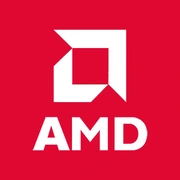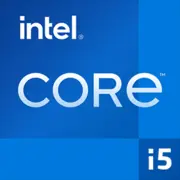AMD FX-8120 vs Intel Core i5-3570S
CPU Comparison Result
Below are the results of a comparison of
AMD FX-8120
and
Intel Core i5-3570S
processors based on key performance characteristics, as well as power consumption and much more.
Advantages
- More Total Cores: 8 (8 vs 4)
- Higher Max Turbo Frequency: up to 4 GHz (up to 4 GHz vs 3.80 GHz)
- Higher Technology: 22 nm (32 nm vs 22 nm)
- Newer PCI Express Version: 3.0 (Gen 2 vs 3.0)
- Newer Launch Date: April 2012 (October 2011 vs April 2012)
Basic
AMD
Label Name
Intel
October 2011
Launch Date
April 2012
Desktop
Platform
Desktop
FX-8120
Model Name
?
The Intel processor number is just one of several factors - along with processor brand, system configurations, and system-level benchmarks - to be considered when choosing the right processor for your computing needs.
i5-3570S
Zambezi
Code Name
Ivi Bridge
FX (Zambezi)
Generation
-
CPU Specifications
8
Total Cores
?
Cores is a hardware term that describes the number of independent central processing units in a single computing component (die or chip).
4
8
Total Threads
?
Where applicable, Intel® Hyper-Threading Technology is only available on Performance-cores.
4
3.1 GHz
Basic Frequency
3.10 GHz
up to 4 GHz
Max Turbo Frequency
?
Max Turbo Frequency is the maximum single-core frequency at which the processor is capable of operating using Intel® Turbo Boost Technology and, if present, Intel® Turbo Boost Max Technology 3.0 and Intel® Thermal Velocity Boost. Frequency is typically measured in gigahertz (GHz), or billion cycles per second.
3.80 GHz
-
Intel Turbo Boost Technology 2.0 Frequency
3.80 GHz
-
Intel Turbo Boost Technology
?
Intel® Turbo Boost Technology dynamically increases the processor's frequency as needed by taking advantage of thermal and power headroom to give you a burst of speed when you need it, and increased energy efficiency when you don’t.
2.0
-
Intel Hyper-Threading Technology
?
Intel® Hyper-Threading Technology (Intel® HT Technology) delivers two processing threads per physical core. Highly threaded applications can get more work done in parallel, completing tasks sooner.
No
384 KB
L1 Cache
-
8 MB
L2 Cache
-
8 MB (shared)
L3 Cache
-
AMD Socket AM3+
CPU Socket
?
The socket is the component that provides the mechanical and electrical connections between the processor and motherboard.
FCLGA1155
Yes
Multiplier Unlocked
-
200 MHz
Bus Frequency
-
15.5x
Multiplier
-
32 nm
Technology
?
Lithography refers to the semiconductor technology used to manufacture an integrated circuit, and is reported in nanometer (nm), indicative of the size of features built on the semiconductor.
22 nm
125 W
TDP
65 W
Gen 2
PCI Express Version
?
PCI Express Revision is the supported version of the PCI Express standard. Peripheral Component Interconnect Express (or PCIe) is a high-speed serial computer expansion bus standard for attaching hardware devices to a computer. The different PCI Express versions support different data rates.
3.0
-
Instruction Set
?
The instruction set is a hard program stored inside the CPU that guides and optimizes CPU operations. With these instruction sets, the CPU can run more efficiently. There are many manufacturers that design CPUs, which results in different instruction sets, such as the 8086 instruction set for the Intel camp and the RISC instruction set for the ARM camp. x86, ARM v8, and MIPS are all codes for instruction sets. Instruction sets can be extended; for example, x86 added 64-bit support to create x86-64. Manufacturers developing CPUs that are compatible with a certain instruction set need authorization from the instruction set patent holder. A typical example is Intel authorizing AMD, enabling the latter to develop CPUs compatible with the x86 instruction set.
64-bit
-
Intel 64
?
Intel® 64 architecture delivers 64-bit computing on server, workstation, desktop and mobile platforms when combined with supporting software.¹ Intel 64 architecture improves performance by allowing systems to address more than 4 GB of both virtual and physical memory.
Yes
-
PCI Express Configurations
?
PCI Express (PCIe) Configurations describe the available PCIe lane configurations that can be used to link to PCIe devices.
up to 1x16 | 2x8 | 1x8 & 2x4
1,200 million
Transistors
-
Memory Specifications
DDR3
Memory Type
?
Intel® processors come in four different types: Single Channel, Dual Channel, Triple Channel, and Flex Mode. Maximum supported memory speed may be lower when populating multiple DIMMs per channel on products that support multiple memory channels.
DDR3 1333/1600
-
Max Memory Size
?
Max memory size refers to the maximum memory capacity supported by the processor.
32 GB
Dual-channel
Memory Channels
?
The number of memory channels refers to the bandwidth operation for real world application.
2
-
Max Memory Bandwidth
?
Max Memory bandwidth is the maximum rate at which data can be read from or stored into a semiconductor memory by the processor (in GB/s).
25.6 GB/s
-
Bus Speed
5 GT/s
-
ECC Memory Supported
?
ECC Memory Supported indicates processor support for Error-Correcting Code memory. ECC memory is a type of system memory that can detect and correct common kinds of internal data corruption. Note that ECC memory support requires both processor and chipset support.
No
No
ECC Memory
-
GPU Specifications
-
GPU Name
Intel® HD Graphics 2500
On certain motherboards (Chipset feature)
Integrated Graphics Model
?
An integrated GPU refers to the graphics core that is integrated into the CPU processor. Leveraging the processor's powerful computational capabilities and intelligent power efficiency management, it delivers outstanding graphics performance and a smooth application experience at a lower power consumption.
-
-
Graphics Frequency
?
Graphics max dynamic frequency refers to the maximum opportunistic graphics render clock frequency (in MHz) that can be supported using Intel® HD Graphics with Dynamic Frequency feature.
1.15 GHz
-
Graphics Base Frequency
?
Graphics Base frequency refers to the rated/guaranteed graphics render clock frequency in MHz.
650 MHz
-
Number of Displays Supported
3
Miscellaneous
-
Intel Virtualization Technology for Directed I/O (VT-d)
?
Intel® Virtualization Technology for Directed I/O (VT-d) continues from the existing support for IA-32 (VT-x) and Itanium® processor (VT-i) virtualization adding new support for I/O-device virtualization. Intel VT-d can help end users improve security and reliability of the systems and also improve performance of I/O devices in virtualized environments.
Yes
-
Intel Virtualization Technology (VT-x)
?
Intel® Virtualization Technology (VT-x) allows one hardware platform to function as multiple “virtual” platforms. It offers improved manageability by limiting downtime and maintaining productivity by isolating computing activities into separate partitions.
Yes
-
Instruction Set Extensions
Intel® SSE4.1 | Intel® SSE4.2 | Intel® AVX
-
Enhanced Intel SpeedStep Technology
?
Enhanced Intel SpeedStep® Technology is an advanced means of enabling high performance while meeting the power-conservation needs of mobile systems. Conventional Intel SpeedStep® Technology switches both voltage and frequency in tandem between high and low levels in response to processor load. Enhanced Intel SpeedStep® Technology builds upon that architecture using design strategies such as Separation between Voltage and Frequency Changes, and Clock Partitioning and Recovery.
Yes
-
Execute Disable Bit
?
Execute Disable Bit is a hardware-based security feature that can reduce exposure to viruses and malicious-code attacks and prevent harmful software from executing and propagating on the server or network.
Yes
-
Cache
?
CPU Cache is an area of fast memory located on the processor. Intel® Smart Cache refers to the architecture that allows all cores to dynamically share access to the last level cache.
6 MB Intel® Smart Cache
-
Intel AES New Instructions
?
Intel® AES New Instructions (Intel® AES-NI) are a set of instructions that enable fast and secure data encryption and decryption. AES-NI are valuable for a wide range of cryptographic applications, for example: applications that perform bulk encryption/decryption, authentication, random number generation, and authenticated encryption.
Yes
-
Intel Clear Video HD Technology
?
Intel® Clear Video HD Technology, like its predecessor, Intel® Clear Video Technology, is a suite of image decode and processing technologies built into the integrated processor graphics that improve video playback, delivering cleaner, sharper images, more natural, accurate, and vivid colors, and a clear and stable video picture. Intel® Clear Video HD Technology adds video quality enhancements for richer color and more realistic skin tones.
Yes
-
Intel VT-x with Extended Page Tables (EPT)
?
Intel® VT-x with Extended Page Tables (EPT), also known as Second Level Address Translation (SLAT), provides acceleration for memory intensive virtualized applications. Extended Page Tables in Intel® Virtualization Technology platforms reduces the memory and power overhead costs and increases battery life through hardware optimization of page table management.
Yes
-
Intel InTru 3D Technology
Yes
-
Intel Quick Sync Video
?
Intel® Quick Sync Video delivers fast conversion of video for portable media players, online sharing, and video editing and authoring.
Yes
Benchmarks
Geekbench 6 Single Core
FX-8120
437
Core i5-3570S
663
+52%
Geekbench 6 Multi Core
FX-8120
1637
Core i5-3570S
1857
+13%
Geekbench 5 Single Core
FX-8120
508
Core i5-3570S
775
+53%
Geekbench 5 Multi Core
FX-8120
2446
+0%
Core i5-3570S
2439
Passmark CPU Single Core
FX-8120
1333
Core i5-3570S
1993
+50%
Passmark CPU Multi Core
FX-8120
4639
+0%
Core i5-3570S
4630


